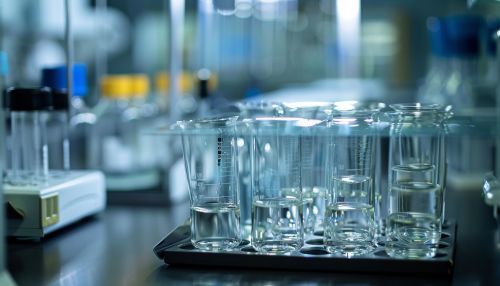Mevalonate pathway
Overview
The Mevalonate pathway, also known as the isoprenoid pathway or HMG-CoA reductase pathway, is an essential metabolic pathway present in eukaryotes, archaea, and some bacteria. It is a crucial biochemical pathway that plays a significant role in a variety of cellular processes, including the synthesis of sterols, isoprenoids, and other lipids. The pathway is named after mevalonic acid, one of the key intermediates in its biochemical reactions.
Biochemical Reactions
The mevalonate pathway consists of a series of biochemical reactions that convert acetyl-CoA, a two-carbon molecule derived from carbohydrates, fats, and proteins, into isopentenyl pyrophosphate (IPP), a five-carbon molecule that is the building block for isoprenoids. The pathway involves three main stages: the synthesis of mevalonate from acetyl-CoA, the conversion of mevalonate to IPP, and the conversion of IPP to various isoprenoids.


Synthesis of Mevalonate
The synthesis of mevalonate is initiated by the condensation of two molecules of acetyl-CoA to form acetoacetyl-CoA, a reaction catalyzed by the enzyme thiolase. Acetoacetyl-CoA is then condensed with another molecule of acetyl-CoA to form 3-hydroxy-3-methylglutaryl-CoA (HMG-CoA), a reaction catalyzed by the enzyme HMG-CoA synthase. HMG-CoA is then reduced to mevalonate by the enzyme HMG-CoA reductase, the rate-limiting step in the mevalonate pathway.
Conversion of Mevalonate to IPP
The conversion of mevalonate to IPP involves several steps. First, mevalonate is phosphorylated by the enzyme mevalonate kinase to form 5-phosphomevalonate. Next, 5-phosphomevalonate is phosphorylated by the enzyme phosphomevalonate kinase to form 5-diphosphomevalonate. Finally, 5-diphosphomevalonate is decarboxylated by the enzyme diphosphomevalonate decarboxylase to form IPP.
Conversion of IPP to Isoprenoids
IPP is the precursor for the synthesis of a variety of isoprenoids, including sterols, dolichols, ubiquinones, and prenylated proteins. The conversion of IPP to these isoprenoids involves a series of enzymatic reactions that add, modify, or rearrange the carbon atoms in IPP to form the various isoprenoid structures.
Regulation
The mevalonate pathway is tightly regulated at multiple levels, including transcriptional, post-transcriptional, and post-translational mechanisms. The key regulatory step is the reduction of HMG-CoA to mevalonate by HMG-CoA reductase, which is controlled by a variety of mechanisms, including feedback inhibition by sterols and nonsterol isoprenoids, transcriptional regulation by sterol regulatory element-binding proteins (SREBPs), and post-translational regulation by phosphorylation and ubiquitination.
Clinical Significance
The mevalonate pathway is of significant clinical interest because of its role in human health and disease. Abnormalities in the pathway can lead to a variety of disorders, including hypercholesterolemia, atherosclerosis, and certain types of cancer. Moreover, the pathway is the target of several drugs, including statins, which are widely used to lower cholesterol levels in patients with cardiovascular disease.
